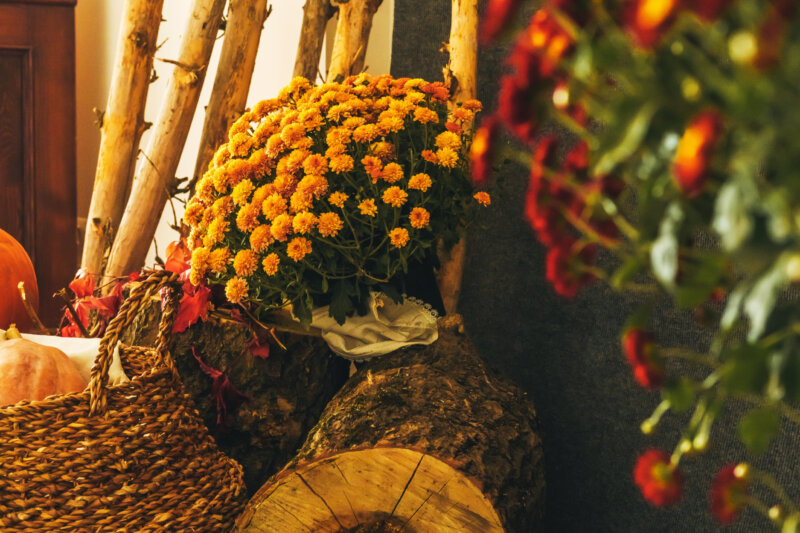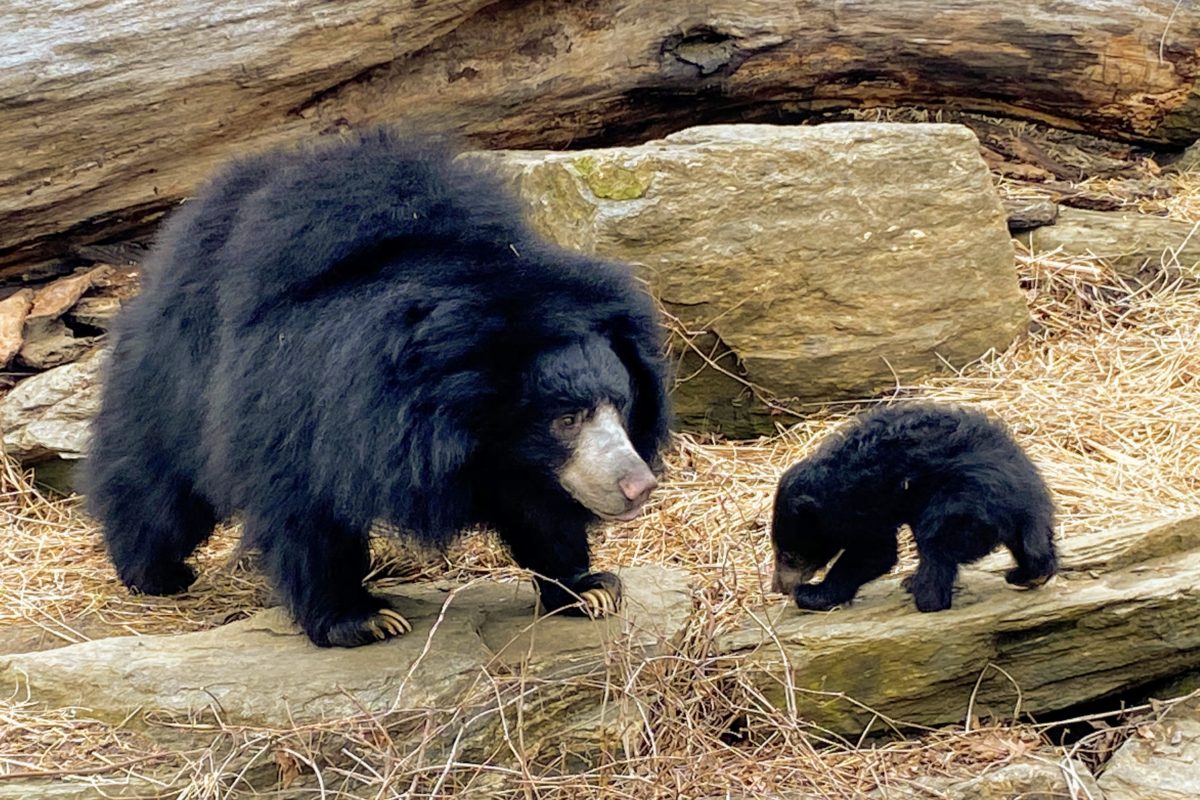
Because we could all use a big “AWWWWW” right now!
On March 26 at 2 p.m., the Philadelphia Zoo introduced the new sloth bear cub on Facebook Live as it ventured outside for the first time – romping, playing, climbing and hanging with mom. Click here to view the video on Facebook.
“Today Kayla and her cub explored their outdoor exhibit area for the very first time,” says Donna Evernham, Philadelphia Zoo’s Curator of Ungulates and Carnivores. “The adventure was a success, we saw the cub following moms every move and Kayla teaching the cub how to be a bear,” says Evernham.
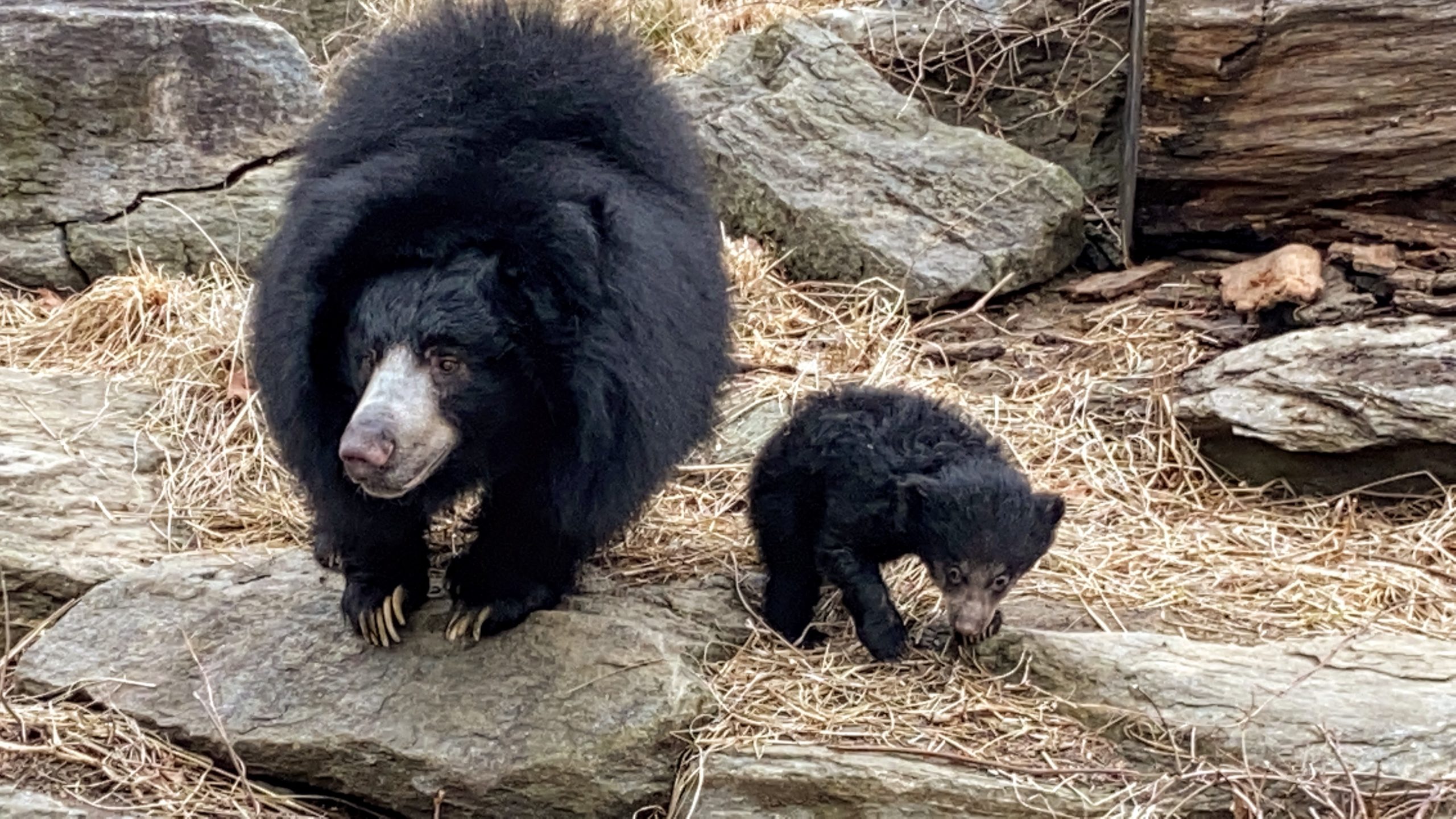
Photos from the cub’s first outdoor venture on March 26.
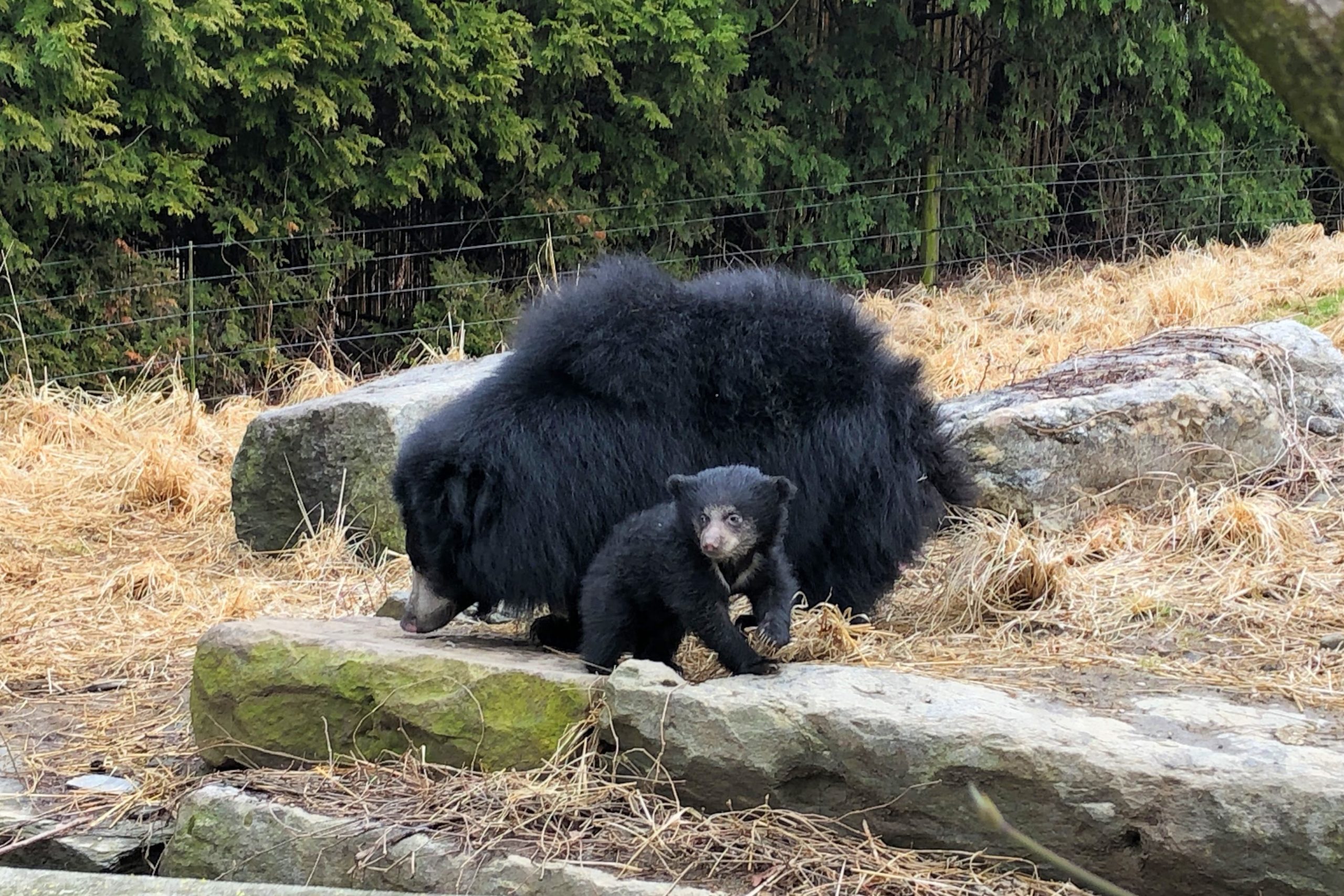
Since its birth, the cub has remained indoors with mom bonding. During this quality time, Kayla kept the baby very close, with neither of them exploring very far from the other. Keepers kept a watchful eye on the two by a video camera that was installed in the exhibit. The camera provided privacy for the animals while enabling the keepers to observe them ensuring all was going well while mom and cub were denned up and out of sight. Recently, Kayla began to give the cub more freedom to explore, indicating to the keepers that she is ready to venture outdoors with the cub.
The adorable sloth bear cub was born to Kayla, the Zoo’s 7-year-old female and 6-year-old Bhalu in December. This is the first successful birth for Kayla and Bhalu, and the first healthy sloth bear born at Philadelphia Zoo since 1997. The gender of the cub has not yet been determined.
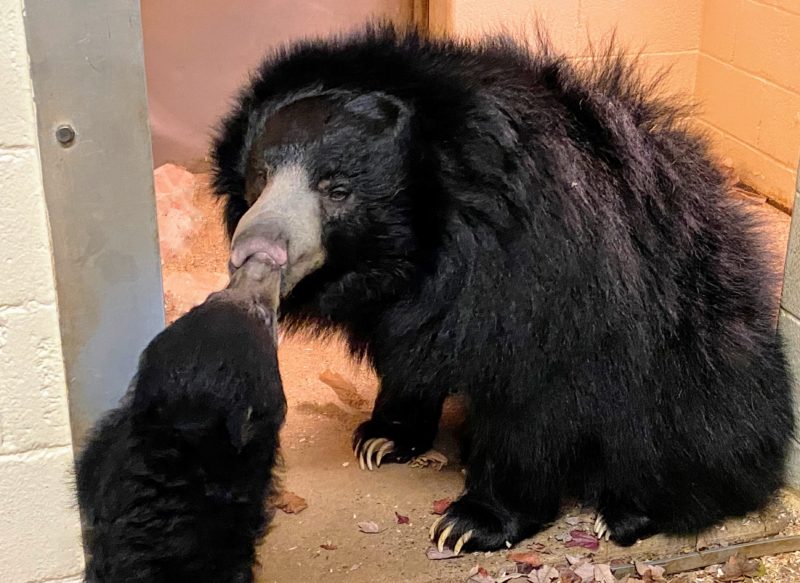
Cub & Mother Kayla Kissing (Photo provided by Aversa PR)
Growing by leaps and bounds, weighing in at around 20 lbs and crawling and climbing like a pro, the little one is keeping mom on her toes. “We are thrilled to see Kayla and her new cub explore their outdoor exhibit area together,” says Dr. Andy Baker, Philadelphia Zoo’s Chief Operating Officer. “Though the Zoo is closed to the public, our keeper and veterinary teams are here caring for Kayla and her cub, and doing a great job,” says Dr. Baker. “From planning to preparing exhibit areas, to constant observation and communication, their dedication and exceptional animal care is unmatched. This successful birth and now rearing is important to the overall sloth bear population in the U.S.,” says Baker.
As the cub continues to grow, it will begin to ride on Kayla’s back by clinging to her long fur to get around faster. Eventually it will become more independent, and will continue to grow larger, ultimately weighing up to 300 pounds when fully grown. Still nursing from mom, the infant will learn how to use its unique flexible snouts to suck up termites or ants from trees. Aside from insects, sloth bears also enjoy fruits, flowers, sugar cane and honey.
Native to the lowland forests of India, Nepal, and Sri Lanka, sloth bears are listed as vulnerable by the International Union for Conservation of Nature (IUCN) with populations declining dramatically in recent decades due to habitat loss, human-wildlife conflict and poaching.
Philadelphia Zoo is home to three sloth bears: 6-year-old Bhalu, 7-year-old Kayla and 13- year-old Balawat.
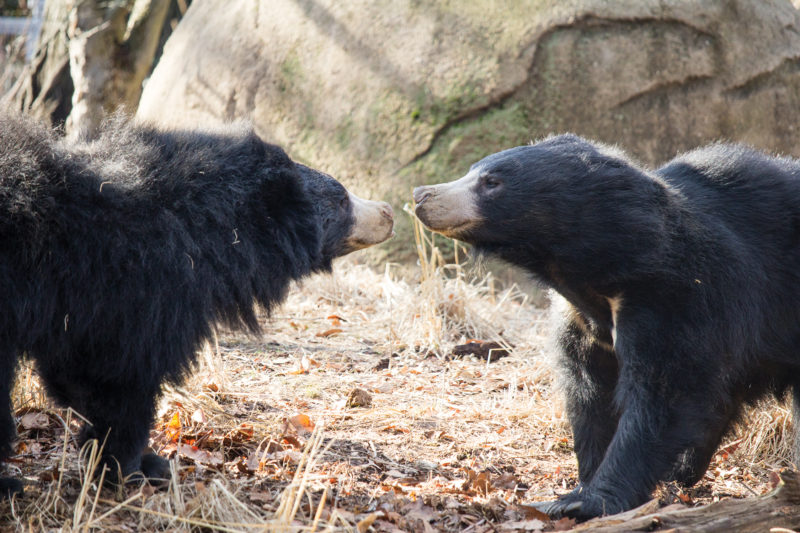
Parents Kayla and Bhalu (Photo provided by Aversa PR)
SPRING BACK Fund
The birth of this cub highlights the critical work happening at Philadelphia Zoo each and every day. “Our staff continues to work endlessly, both onsite and remotely, to care for our animals,” says Vikram H. Dewan, Philadelphia Zoo’s President & CEO. “Because this shut down will quickly impact our future, we have launched the SPRING BACK Fund to support our operating needs during this difficult time. Philanthropy is a very big part of supporting our mission to connect people with wildlife, and we are grateful for contributions of all sizes,” says Dewan. Supporters should visit www.PhiladelphiaZoo.org
For more information on, or to donate to the SPRING BACK fund visit, www.PhiladelphiaZoo.org. Stay connected through Facebook: PhiladelphiaZoo; Instagram: @philadelphiazoo; Twitter: @phillyzoo.



